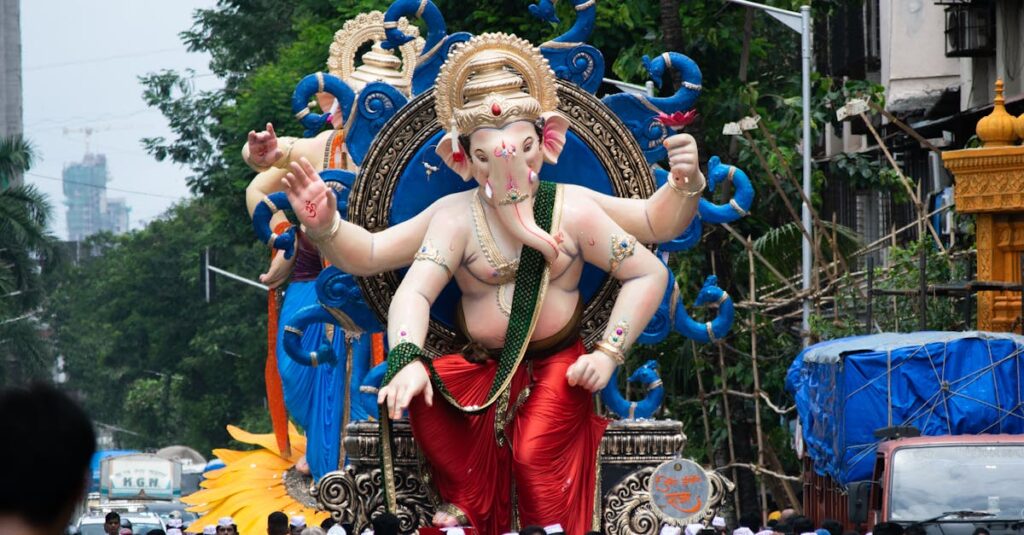Introduction: Mumbai’s Streets: The Heartbeat of a City
In a city like Mumbai, the streets tell more stories than any book could contain. From the shimmering skyscrapers of Nariman Point to the bustling bazaars of Crawford Market, Mumbai’s roads are its lifeblood. But have you ever stopped to wonder about the stories etched in those streets? The people, their dreams, and their daily struggles weave together a tapestry of resilience, ambition, and connection that defines the very essence of this city.
Take a walk down any street in Mumbai and you’ll find a variety of stories unfolding, all connected by a singular thread of survival and hope. But what makes these stories so special? Why do the streets of Mumbai hold such a magnetic pull for its people? Let’s explore this vibrant, chaotic, yet oddly comforting world where every corner has a new tale waiting to be discovered.
The Streets as a Stage for Everyday Drama
Imagine stepping out of your house on a typical morning in Bandra. The sun is just beginning to rise, casting a golden glow over the Arabian Sea. But before you can fully soak in the beauty of it, you’re greeted by the hustle and bustle of life. Street vendors shout their sales pitches, cars honk impatiently at each other, and the aroma of fresh pav bhaji fills the air. It’s a chaotic scene, but there’s a rhythm to it—an unsung harmony in the madness.
Take for instance, the dabbawalas—Mumbai’s legendary lunch delivery men. Every morning, they collect home-cooked meals from various parts of the city, and deliver them to office workers across the vast expanse of Mumbai. It’s a perfect example of how Mumbai’s streets are woven into the daily fabric of its people’s lives. These men have their own little community and work with precision to ensure that everyone gets their meal on time. No small feat in a city where traffic can be a nightmare!
The Unseen Connections
What’s remarkable about Mumbai’s streets is the way they connect people. On one street, you might meet a budding entrepreneur haggling over prices with a vendor, while on another, you might witness a group of children running to school, weaving in and out of pedestrians and rickshaws. Everyone, from the daily wage workers to the high-powered CEOs, shares these streets. The paths may be different, but they converge in a common rhythm of resilience.
It’s here on these crowded streets that the spirit of Mumbai thrives. The street-side chaiwala serves as the informal meeting ground for businessmen and workers alike. People from all walks of life gather here, exchanging news, sharing gossip, or discussing everything from politics to Bollywood. This isn’t just a place to grab a quick cup of tea—it’s where connections are formed, relationships are built, and dreams are shared.
The Pulse of Mumbai: Streets as the Lifeblood of Business
Take a stroll through Mumbai’s many markets, and you’ll see how vital the streets are to the city’s economy. From Colaba Causeway’s tourist stalls to the wholesale markets of Dharavi, the streets are where business happens—often with a sense of urgency and determination.
One such market is Zaveri Bazaar, Mumbai’s famous jewelry market. It’s not just a place for high-end purchases; it’s the place where generations of families have built their fortunes, often starting as small traders in a narrow lane. The streets here buzz with activity. Sellers shout for attention, buyers haggle, and the glitter of gold and silver catches your eye from every corner. But it’s more than just commerce; it’s a reflection of the city’s spirit of entrepreneurship and resilience. In Mumbai, even the most modest beginnings can lead to great success—if you’re willing to put in the work.
The Daily Struggle and Survival
But not all stories on Mumbai’s streets are about prosperity. For many, the streets are a place of survival—an endless hustle to make ends meet. From the beggars lining the streets near CST to the street vendors selling everything from shoes to sunglasses, Mumbai’s streets serve as a daily battleground for those who are trying to carve out a life in the city.
Take the case of Maya, a single mother who sells flowers near Andheri Station. Every morning, she packs her small cart with garlands and flowers, pushing it through the busy streets to find a spot where she can set up. Her days are long, and the work is grueling. Yet, she manages to put her two children through school and send money back home to her village in Uttar Pradesh. Maya’s story is just one of the millions of others who rely on Mumbai’s streets for survival. And yet, despite the hardships, there’s a resilience in the way they carry on. It’s the very thing that makes Mumbai—and its streets—so unique.
Conclusion: The Stories That Never End
Whether it’s the dabbawala rushing to deliver lunch in time, the businessman sealing a deal over a cup of chai, or the mother selling flowers to support her children, the streets of Mumbai shape the stories of those who walk them. There’s a certain beauty in how these seemingly ordinary people, going about their everyday lives, contribute to the pulse of the city. The streets become more than just roads; they are the stage for the daily drama of life, a place where resilience, dreams, and hope collide in the most unexpected ways.
As you walk the streets of Mumbai, take a moment to observe the stories unfolding around you. You’ll find that in this city, no one is ever truly alone. Every person, every corner, every bustling street is part of a larger narrative—one that speaks of survival, ambition, and, above all, connection. And maybe, just maybe, that’s the secret that makes Mumbai the city that never sleeps.

